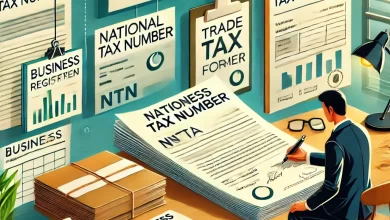What Does It Mean to Coordinate Respective Legislative Strategies?

In the intricate political system of the United States, the successful passage of laws requires careful planning, negotiation, and collaboration. To coordinate respective legislative strategies means aligning efforts, resources, and approaches among key stakeholders, such as legislators, political parties, and committees, to achieve specific legislative goals. This coordination is essential to navigate the complexities of the legislative process, particularly in the House of Representatives and the Senate.
This article breaks down what coordinating legislative strategies entails, its importance, and how it works in practice.
See Article Content
- 1 1. Understanding the Legislative Process in the United States
- 2 2. What Does It Mean to Coordinate Legislative Strategies?
- 3 3. Role of the House of Representatives in Coordinating Strategies
- 4 4. Why Is Coordinating Legislative Strategies Important?
- 5 5. Examples of Coordinated Legislative Strategies
- 6 6. Challenges in Coordinating Legislative Strategies
- 7 7. The Future of Legislative Coordination
- 8 Conclusion
1. Understanding the Legislative Process in the United States
Before diving into the concept of coordinating legislative strategies, it’s crucial to understand the legislative process in the United States. Legislation begins as an idea or proposal, which is then formally introduced as a bill. The process includes multiple stages, such as:
- Drafting and introducing the bill.
- Committee review and hearings.
- Debates, amendments, and votes in both chambers: the House of Representatives and the Senate.
- Reconciling differences in the bill if passed in varying forms.
- The president’s approval or veto.
Given this multi-step process, the success of a bill depends heavily on planning and coordination among legislators.
2. What Does It Mean to Coordinate Legislative Strategies?
To coordinate respective legislative strategies involves aligning the approaches, messaging, and actions of various stakeholders to ensure a unified effort in pushing legislation forward. This coordination often includes:
- Strategic Communication: Ensuring all parties share a consistent message when addressing the public, media, or other legislators.
- Committee Collaboration: Aligning efforts between key committees to move bills efficiently through hearings and reviews.
- Timing and Prioritization: Strategizing the optimal time to introduce, debate, or vote on legislation to maximize its chances of success.
- Bipartisan Negotiations: Building consensus and securing support from across the political spectrum.
By synchronizing efforts, legislators can avoid missteps that may stall or weaken proposed laws.
3. Role of the House of Representatives in Coordinating Strategies
The House of Representatives plays a central role in the legislative process, especially when coordinating legislative strategies. Here’s how:
a. Majority and Minority Leaders
The majority and minority leaders in the House are responsible for organizing their respective parties to support or oppose bills. These leaders work to:
- Develop strategies for floor debates and amendments.
- Coordinate messaging to ensure unity within their party.
- Identify opportunities to negotiate with the opposing party.
b. Committees and Subcommittees
Most legislation in the House begins in committees. Effective coordination between committees ensures bills are thoroughly reviewed and moved efficiently through the process. Committees also work with external experts, stakeholders, and advocacy groups to gather information and build support.
c. Whip System
The House Whip system is critical for coordinating votes. Whips gather information on how legislators plan to vote and address concerns to secure the necessary support for bills.
4. Why Is Coordinating Legislative Strategies Important?
Coordination is vital to the legislative process for several reasons:
- Ensuring Efficiency: The legislative process is lengthy and complex. Coordinating efforts minimizes delays and ensures bills move smoothly through each stage.
- Securing Votes: Passing legislation requires majority support. Coordination helps leaders identify and address opposition early, improving the bill’s chances of success.
- Building Coalitions: For bipartisan legislation, effective coordination facilitates collaboration across party lines to achieve common goals.
- Managing Public Perception: Aligning messaging helps legislators present a consistent and compelling narrative to the public, media, and stakeholders.
Without coordination, even well-crafted legislation can fail due to disorganization or lack of support.
5. Examples of Coordinated Legislative Strategies
To better understand how legislative strategies are coordinated, consider the following real-world examples:
a. Affordable Care Act (ACA)
The passage of the ACA in 2010 required extensive coordination among Democratic leaders in Congress. House and Senate leaders worked closely to:
- Align committee efforts in drafting and amending the bill.
- Build consensus among party members to secure the necessary votes.
- Address public concerns through strategic communication and outreach.
b. Infrastructure Investment and Jobs Act (2021)
This bipartisan bill required collaboration between Democrats and Republicans. Leaders in the House and Senate:
- Negotiated compromises to satisfy both parties.
- Strategized the timing of votes to ensure momentum.
- Coordinated messaging to emphasize the bill’s benefits to constituents across the country.
6. Challenges in Coordinating Legislative Strategies
Despite its importance, coordinating legislative strategies is not without challenges:
- Partisan Divides: Political polarization can make it difficult to build consensus and coordinate efforts across party lines.
- Competing Priorities: Legislators may prioritize different issues, making it challenging to align strategies.
- Public Opinion: Managing public perception requires careful messaging, particularly when legislation is controversial.
- Unpredictable Events: Unexpected developments, such as economic crises or national emergencies, can disrupt planned strategies.
Overcoming these challenges requires skilled leadership, clear communication, and flexibility in adapting strategies to changing circumstances.
7. The Future of Legislative Coordination
As the legislative process evolves, coordination strategies will become increasingly sophisticated. Technology, for example, plays a growing role in facilitating communication and data analysis, enabling legislators to:
- Identify trends and public sentiment through digital tools.
- Streamline communication among party members and committees.
- Improve transparency and accountability in the legislative process.
Additionally, increased efforts to bridge partisan divides will be essential for effective coordination in a polarized political landscape.
Conclusion
Coordinating respective legislative strategies is a critical component of the legislative process in the United States. Whether in the House of Representatives or the Senate, aligning efforts, messaging, and actions ensures that legislation can move forward effectively. From securing votes to managing public perception, successful coordination requires skilled leadership, strategic planning, and collaboration.
Understanding this process sheds light on how laws are crafted, negotiated, and passed in a complex political system. As challenges arise, the ability to coordinate strategies will remain essential for addressing the needs of the public and achieving legislative success.
If you enjoyed reading this article, we’re confident the next one will also pique your interest What Are John Deere’s Unique Marketing Strategies?






